The US has minted a one-cent coin, now commonly called the
penny, since 1793, and has seen many changes in design, material, size, and weight. Throughout the history of the US penny, there have been 10 major changes in size and material, as follows:
- The 1793-1796 US penny was made of 100% copper, and weighed a massive 13.48 grams!
- From 1796-1857, the US penny remained 100% copper, but was sized down a bit weighing 10.89 grams. The size of this penny was approximately the same size as today's Susan B. Anthony Dollar.
- The 1856-1864 penny was really sized down, weighing only 4.67 grams, and was composed of about 88% copper and 12% nickel.
- From 1864-1942, we see the US penny take the basic form of the modern penny, weighing in at 3.11 grams, made of bronze composed of 95% copper and 5% tin and zinc.
- 1943 brought a unique limited version of the penny to us, made of zinc-coated steel. This is the only penny production that produced a 'silvery' color, instead of the bronze or copper colored pennies we see everywhere.
- From 1944 up through 1981, the penny was produced from brass (95% copper, 5% zinc) or bronze (95% copper, 5% tin and zinc). It was brass from 1944-1946, and then bronze from 1946-1962, and changed back to brass from 1962-1981. They all weighed in at 3.11 grams.
- 1982 saw a mixed minting of brass pennies and copper-plated zinc pennies, which is what today's pennies are made from. Today's composition is 97.5% zinc, and just 2.5% copper, and weigh the lightest yet, at just 2.5 grams. 1982 was the last year of the brass pennies.
It is hard to imagine a penny not having Lincoln on the front, but he was only born in 1809 and can't be on all of them! Lincoln was put on the penny face in 1909 to commemorate the celebration of what would have been his 100th birthday. But what were some of the previous designs? First, we will categorize the pennies by size:
1793-1857 are known as large cents, while
1856-current pennies are known as small cents.
Large Cent Designs
- 1793 saw three different designs, the Flowing Hair Chain penny, Flowing Hair Wreath penny, and the Liberty Cap penny. The Liberty Cap penny was produced until 1796, while both of the Flowing Hair pennies were only produced in 1793.
- The 1796-1807 penny is known as the Draped Bust penny.
- The 1808-1814 penny is known as the Classic Head penny.
- The 1816-1839 penny is known as the Coronet penny.
- The last large cent penny was produced from 1839-1857, and is known as the Braided Hair penny.
If you noticed that there was no design listed for the 1815 penny, it's because there was no pennies minted that year! The US mint didn't have enough copper to produce a penny because the government was resourcing all available copper towards the War of 1812.
Small Cent Designs
- Starting off the era of US small cents was the Flying Eagle penny, produced from 1856-1858
- From 1859-1909 the Indian Head penny was produced, and was the last penny before Lincoln was put on the face.
- In 1909-1958 the Lincoln Wheat penny was produced, which can still be found every once in awhile in circulation.
- The Lincoln Memorial penny was produced from 1959-2008, which is the design most of us think about when we imagine a penny.
- In 2009, the Lincoln Bicentennial 4 penny was produced in commemoration to Lincoln's 200th birthday. There were four different designs on the reverse side, featuring some of the history of Lincoln's life.
- The 2010-current penny is known as the Lincoln Union Shield penny.
Below are pictures in chronological order of the different designs of each penny.
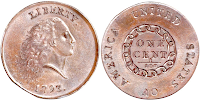 |
| 1793 Flowing Hair Chain Large Cent |
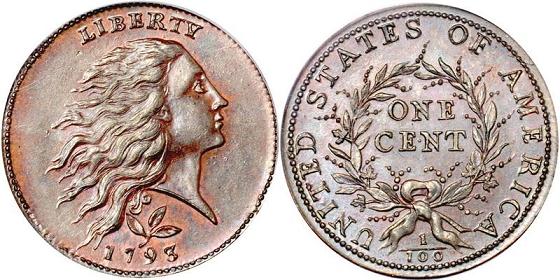 |
| 1793 Flowing Hair Wreath Large Cent | |
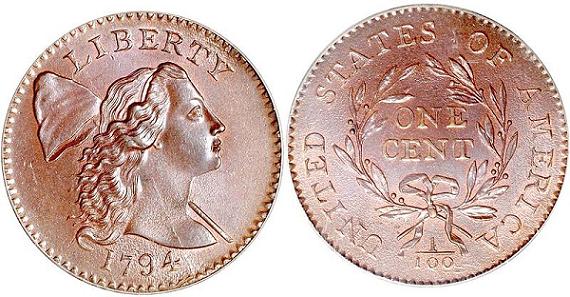 |
| 1794 Liberty Cap Large Cent |
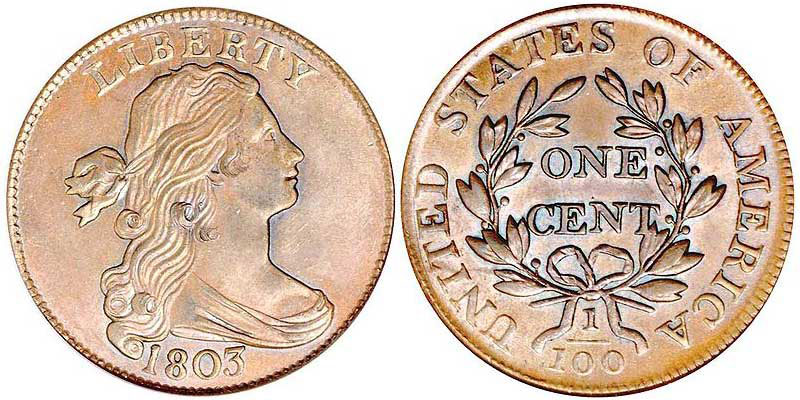 |
| 1803 Draped Bust Large Cent |
 |
| 1811 Classic Head Large Cent |
|
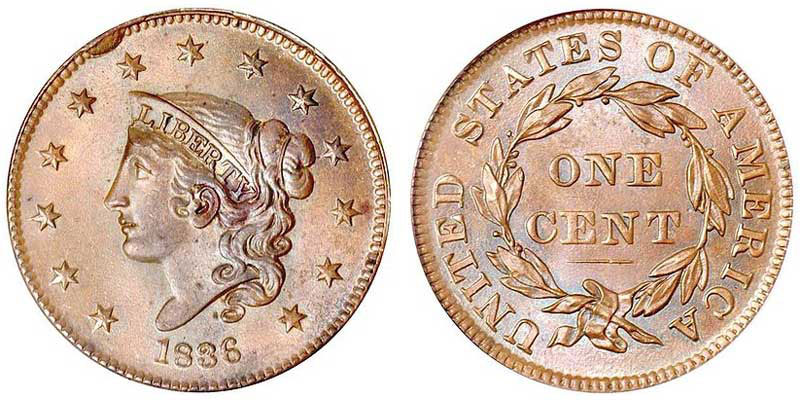 |
| 1836 Coronet Large Cent |
 |
| 1853 Braided Hair Large Cent |






